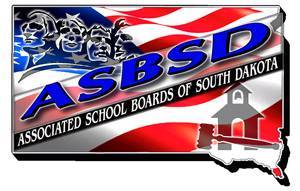Equalizing other revenue school districts receive isn’t a new idea in South Dakota’s legislature, but it’s one that stirred debate about the way schools are funded.
Rep. Dan Dryden introduced two bills during the 2014 legislative session related to other revenue equalization – both were defeated – and presented the ideas to members of the Legislative Planning Committee at their recent meeting held Monday, Sept. 8 in Pierre.
Rep. Dryden said the idea of equalizing other revenue is a “philosophical shift” in the way education is funded, but noted that the potential to create winners and losers among districts – mainly related to the proposal of equalizing four other revenue taxes – is why the current method has “never ever been changed.”
A proposal equalizing tax revenue from wind energy and bank franchise taxes and the gross receipts of telephone companies and electric co-ops – addressed by House Bill 1205 during session – was the most controversial of the proposals presented by Rep. Dryden.
Currently, state law calls for any revenue collected from the taxes to be distributed to districts within the county it’s collected. Rep. Dryden’s proposal would evenly distribute the revenue collected to all South Dakota school districts.
A “hold harmless” clause discussed by Rep. Dryden would establish a revenue base for districts to receive based on the first year of the equalization plan. Any revenue collected above the base level set in the first year would be distributed to all school districts.
“My intent is to look at this long-term,” Rep. Dryden said, noting that he anticipated revenue from these to taxes to increase in the future.
“If revenue grows enough over the years you wouldn’t need the hold harmless clause.”
Rep. Dryden’s second proposal dealt with the distribution of fine money – House Bill 1204 from session – and would require a large investment from the state.
Fine money is collected by the county and distributed to the school districts within it and the state constitution prevents it from being redistributed.
Based on the proposal, fine money revenue would be calculated in a district’s local effort portion of the state aid formula and would require an $11.6 million investment from the state to maintain the 54-46 percent split established by the Cutler-Gabriel provision in the state aid formula.
Rep. Dryden said the intent of the proposal isn’t to change the current percentage split in the state aid formula, but rather provide more money to school districts, which would come in the form of $162 per student.
Districts who collect enough fine money revenue equal to the $162 per student wouldn’t receive any additional dollars, but districts who did not reach the per student level set by the proposal would receive the funding.
Committee member Sen. Mike Vehle said the proposal wouldn’t create “losers in a sense” however some districts would not receive the financial bump others may.
Rep. Dryden said the state’s administrative branch discussed the proposals with him and showed some interest in them. He said he believed there was “confusion” among school districts about the proposals and “overcoming the fear” about the proposals would be the task.
A follow up meeting for the planning committee is tentatively scheduled after the November elections.
For updates on the committee’s work, check the ASBSD Blog and follow us on Twitter @asbsd_org.
